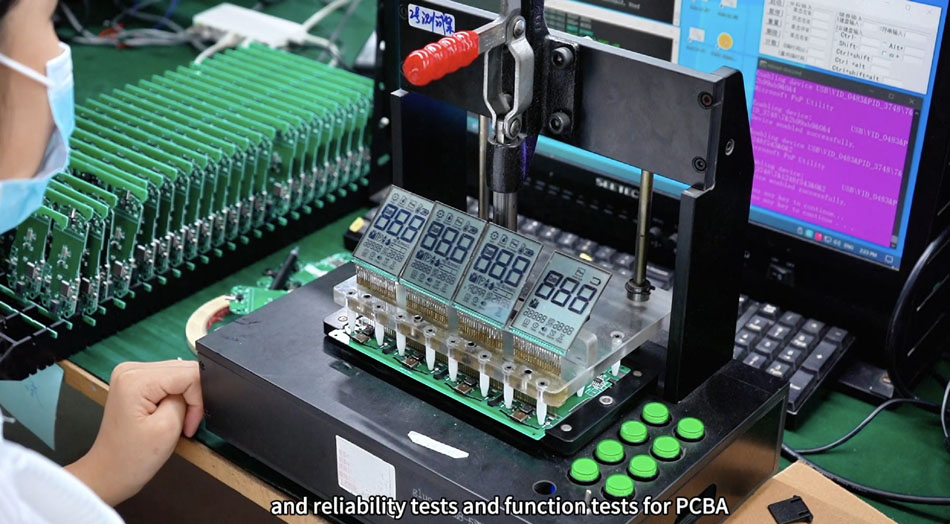- English
- Español
- Português
- русский
- Français
- 日本語
- Deutsch
- tiếng Việt
- Italiano
- Nederlands
- ภาษาไทย
- Polski
- 한국어
- Svenska
- magyar
- Malay
- বাংলা ভাষার
- Dansk
- Suomi
- हिन्दी
- Pilipino
- Türkçe
- Gaeilge
- العربية
- Indonesia
- Norsk
- تمل
- český
- ελληνικά
- український
- Javanese
- فارسی
- தமிழ்
- తెలుగు
- नेपाली
- Burmese
- български
- ລາວ
- Latine
- Қазақша
- Euskal
- Azərbaycan
- Slovenský jazyk
- Македонски
- Lietuvos
- Eesti Keel
- Română
- Slovenski
- मराठी
- Srpski језик
How to optimize PCBA processing production line through big data analysis
2025-03-20
In modern manufacturing, big data analysis has become an important tool to improve production efficiency and quality. For PCBA (Printed Circuit Board Assembly) processing production line, big data analysis can significantly optimize the production process, reduce costs and improve product quality. This article will explore how to use big data analysis to optimize PCBA processing production line and help enterprises achieve more efficient and accurate production management.

I. Application of big data analysis in PCBA processing
1. Real-time monitoring and data acquisition
On the PCBA processing production line, various data in the production process can be collected in real time through sensors and data acquisition equipment. These data include machine operation status, production speed, temperature, humidity, etc. Using big data analysis technology, the operation of the production line can be monitored in real time, problems can be discovered and solved in time, and the impact of equipment failure or production abnormalities on production efficiency can be prevented.
2. Production process optimization
By analyzing big data in the production process, production bottlenecks and inefficient links can be identified. For example, by analyzing the usage of equipment and production cycle data, possible delay factors in the production process can be found, thereby optimizing the production process and reducing invalid operations and idle time. In addition, by comparing and analyzing different production batches, the optimal production parameter settings can be found to improve the overall efficiency of the production line.
3. Quality control and predictive maintenance
Big data analysis can help companies improve product quality. By analyzing a large amount of quality data generated during the production process, key factors affecting product quality can be identified and corresponding measures can be taken to improve them. In addition, big data analysis can also be used for predictive maintenance. By analyzing the historical data and fault records of the equipment, potential failures of the equipment can be predicted, so that maintenance can be performed before the problem occurs, reducing downtime and production losses.
II. Best practices for big data analysis implementation
1. Data collection and integration
To give full play to the role of big data analysis, it is first necessary to ensure the accuracy and integrity of the data. Establish a sound data collection system to ensure that data from all links can be uploaded to the data center in real time and accurately. At the same time, integrate data from different equipment and production lines to form a comprehensive data platform to provide a reliable data basis for subsequent analysis.
2. Data analysis tools and technologies
Choosing appropriate data analysis tools and technologies is the key to optimizing PCBA processing production lines. Using machine learning, data mining and other technologies, valuable information can be extracted from large amounts of data. For example, data mining technology can be used to discover potential production problems and trends, while machine learning models can help predict equipment failures and production bottlenecks.
3. Real-time feedback and adjustment
Based on data analysis, real-time feedback and adjustment are the key to ensuring the optimization effect of the production line. Establish a real-time data monitoring system to promptly feedback the analysis results to the production line operators and managers, and adjust the production parameters and processes in time according to the feedback information to achieve dynamic optimization.
4. Personnel training and skills improvement
The effective implementation of big data analysis is inseparable from the support of technical personnel. Enterprises need to train relevant personnel to improve their data analysis capabilities and their ability to interpret data results. Only personnel with corresponding skills can effectively use data analysis results to make correct decisions and adjustments.
Conclusion
Optimizing PCBA processing production lines through big data analysis can significantly improve production efficiency, reduce costs, and improve product quality. Real-time monitoring, production process optimization, quality control, and predictive maintenance are the main application areas of big data analysis in PCBA processing. During the implementation process, attention should be paid to data collection and integration, selection of appropriate analysis tools, real-time feedback and adjustment, and personnel training. With the continuous development and application of big data technology, the optimization of PCBA processing production lines will become more intelligent and precise in the future, bringing greater competitive advantages to enterprises.
-
Delivery Service






-
Payment Options









